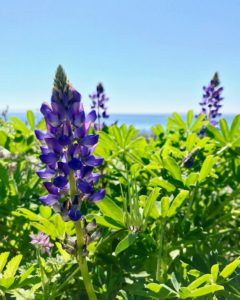Maybe Bloomers
 Spring brings a spate of wildflowers across California – golden gardens and violet seas that stretch along coastlines, across plains, over mountains, and down into deserts. These fleeting masterpieces have served as a muse for many of America’s famous nature writers and painters. In Southern California, large crowds travel to deserts to see these spectacles, but many coastal parks, including Crystal Cove, can also have wonderful displays.
Spring brings a spate of wildflowers across California – golden gardens and violet seas that stretch along coastlines, across plains, over mountains, and down into deserts. These fleeting masterpieces have served as a muse for many of America’s famous nature writers and painters. In Southern California, large crowds travel to deserts to see these spectacles, but many coastal parks, including Crystal Cove, can also have wonderful displays.
The expression “April showers bring May flowers” was clearly not written with California in mind. April is relatively dry, and by May, flowers are mostly gone. Typical wildflower blooms begin in March and last through April, but since wildflower blooms are so unpredictable, it’s hard to label any one as typical. The most obvious factor that influences wildflowers is rainfall. Landscapes that receive large amounts of rainfall the previous year will often experience super blooms, where native flowers carpet the land. It is important that rainfall not only be abundant, but also consistent. While rainfall is required, it is hardly the only factor that influences a bloom. Temperature also plays a key role in the occurrence of wildflowers. If the winter is too cold or there are too many dry winds, the flowers suffer. A final key factor is the quality of the ecosystem. If the seed bank is depleted, or there are too few pollinators, large blooms will be abated. Perfect weather will not make up for a lack of suitable land.
With the rain that California has received this winter, the coming spring is promising for wildflowers across the state. Hopefully visitors to Crystal Cove will witness a landscape painted with lupines (Lupinus sp.) and sunflowers (Encelia californica).
Time will reveal the lasting impacts of the drought on our flowers, but whether our bloom is simple or super, visitors can at the very least enjoy the uniqueness of this (and every) year’s wildflowers.
